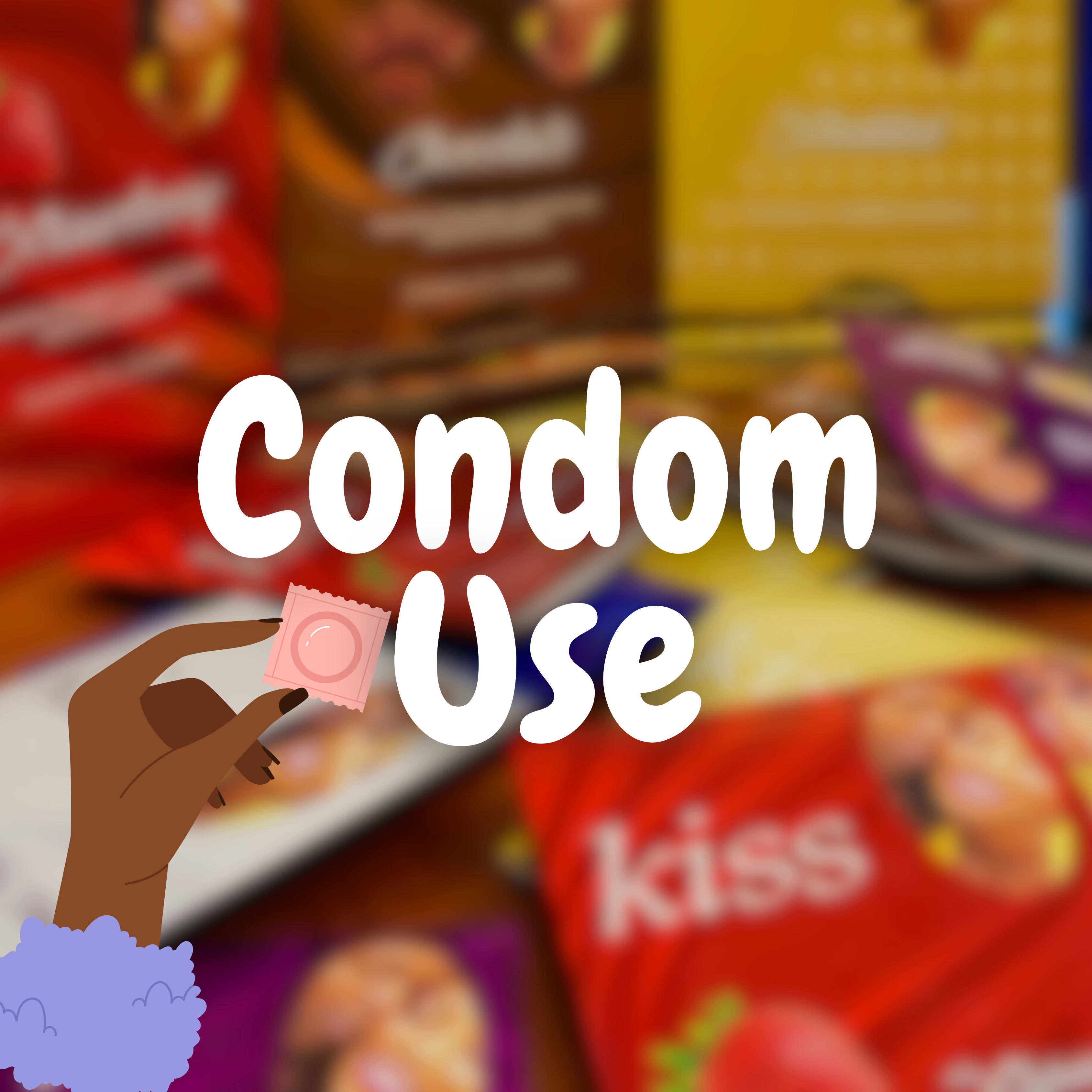
Condom use
Condom use
How do condoms work? What are they?
Most condoms are made of latex or polyurethane and are thin, stretchy shields. During sexual action, they are worn over the penis to keep semen from getting into the vagina, anus, or mouth. This lowers the risk of getting pregnant and getting STIs like HIV.
By putting up a barrier between sexual partners, condoms stop them from touching each other directly and share body fluids. The point of them is to catch sperm.
What kinds of condoms are there?
There are different kinds of condoms to meet the needs and wants of different people:
Latex condoms are the most popular type and are good at keeping you from getting pregnant and getting STIs. But people who are allergic to rubber might not be able to wear them.
Non-Latex Condoms: People who are allergic to latex can use non-latex condoms instead. These are made from materials like polyurethane or polyisoprene. They are also thinner and might be more sensitive.
Flavored Condoms: These are made for oral sex and come in different tastes to make the experience better. But you shouldn't use them for vaginal or anal sex because they might have sugars in them that can upset the pH balance in your vaginal area or irritate it.
Textured condoms: The surface of a textured condom has raised bumps, ridges, or ribs that make contact more stimulating for both parties.
Spermicidal condoms: Some condoms have a spermicide on them to lower the chance of getting pregnant even more. Spermicidal lubricants, on the other hand, may irritate some people and shouldn't be used as the main way of birth control.
What is the right way to use a condom?
To get the most out of condoms, they should be used the right way:
Read the Expiration Date: Before using a condom, always read the date that says "expiration" on the package. Used condoms might not work as well and are more likely to break.
Carefully Open: Be careful not to tear the condom when you open the wrapper with your nails, teeth, or other sharp items.
Pinch the Tip: Before putting on the condom, pinch the tip to make a small space for the sperm and lower the chance that it will break.
The Right Way to Roll On: Roll the condom down the shaft of the standing penis until it covers the whole thing. Make sure that the right side of a flavored or ribbed condom is facing outward when you use it.
Use lube:Putting a water- or silicone-based lubricant on the outside of the condom can make it more comfortable to use by reducing friction. Stay away from oil-based lubricants because they can make rubber condoms weaker and more likely to break.
Hold the base of the condom while withdrawing:Hold the base of the condom to keep it from slipping off and spilling semen after ejaculation but before the penis becomes limp. Pull the penis back while it is still standing up to stop leaks.
Take Carefully: When you're done using the condom, take it off carefully, tie a knot in the open end to keep it from spilling, and throw it away in the trash. Consonants should not be flushed down the toilet because they can damage the pipes.
Why would you want to use a condom?
Aside from their main purpose as a method of birth control and protection against STDs, condoms have other perks as well.
● Protection Against STIs: Condoms are a great way to lower your chance of getting HIV, gonorrhea, chlamydia, and syphilis. Using condoms regularly and properly during sexual activity can cut the chances of getting HIV by a large amount.
● Dual Protection: Condoms give two types of protection: they prevent STIs and prevent pregnancy at the same time. Because of this, they are an important tool for people who want to stop unwanted pregnancies and the spread of diseases.
Ease of Use: Condoms are simple to use and don't need much planning.
Other types of birth control may need to be planned ahead of time or medical help to be used, but condoms can be used at any time and don't get in the way of sexual action.
Compatibility with Other Birth Control Methods: Condoms can be used with hormonal contraceptives or intrauterine devices (IUDs) or other birth control methods to give extra protection against pregnancy and STIs. Because they are so flexible, people can make their method of birth control fit their wants and preferences.
How well do condoms work at keeping you from getting pregnant and getting STIs?
When used regularly and correctly, condoms are very good at keeping you from getting pregnant and getting sexually transmitted diseases:
Preventing pregnancy: Latex condoms usually don't work 18 out of 100 times in the first year of using them as their main method of birth control. The failure rate drops to about 2%, though, when everything is used perfectly.
STI Prevention: When used properly and regularly, condoms can stop up to 98% of sexually transmitted infections from spreading. These include HIV, gonorrhea, chlamydia, and syphilis.
On the other hand, they might not work as well against conditions that are spread by touching, like genital herpes and human papillomavirus (HPV).